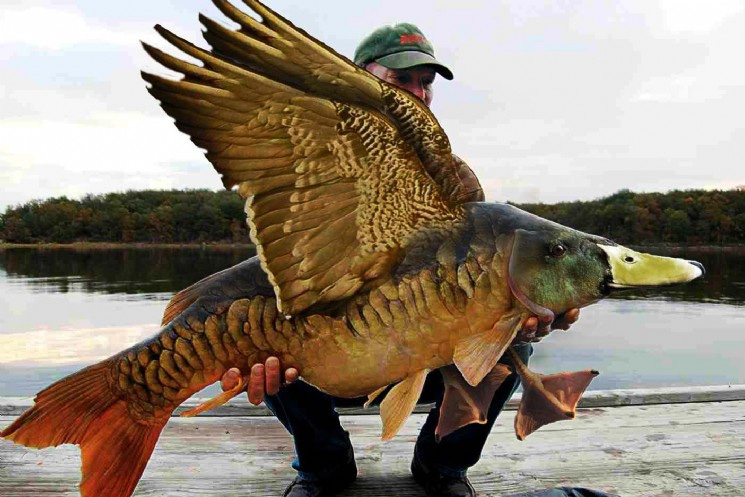Fish ducks also known as mergansers, are a group of diving ducks known for their fish-eating habits. Though beautifully plumed they have a controversial reputation among hunters and fishermen. This article will explore what exactly is a fish duck, their identifying features, habitats, and reasons for their questionable reputation.
What are the Identifying Features of Fish Ducks?
There are 3 main species of fish ducks found in North America:
-
Common Merganser – The largest of the 3 species, it has a green head, white neck collar, and reddish brown body. Males have a shaggy double crest on the back of their heads
-
Red-Breasted Merganser – Slightly smaller than the Common, the male has a green head, white neck, rusty red breast, and gray body. Females are gray-bodied with a reddish brown head and white throat.
-
Hooded Merganser – The smallest species with a fan-shaped, boldly patterned black and white crest on its head. Males have black bodies with white sides, while females are gray.
All 3 merganser species have long, serrated bills used to grip slippery fish. Their bills resemble saws earning them the nickname “sawbills.”
Where are Fish Ducks Found?
Fish ducks inhabit both freshwater and saltwater habitats:
-
Common Mergansers – Breed in northern forests and nest in tree cavities. Winters on large inland lakes and rivers.
-
Red-Breasted Mergansers – Nest on the ground by freshwater lakes and rivers. Winters along coastal areas.
-
Hooded Mergansers – Cavity nesters found mainly on small forested wetlands and ponds. Winters on inland lakes and rivers.
During migration, all 3 mergansers can be observed on lakes, rivers, and ponds throughout North America. Their fish-rich diet leads them to congregate wherever prey is abundant.
Why Do Fishermen Dislike Fish Ducks?
Though stunning to observe in nature, fish ducks have gained an unfavorable reputation among many fishermen. This is due to their voracious appetite for fish. A merganser can consume 1-2 pounds of fish per day – adding up to 250-300 fish annually!
On heavily fished waterways, some anglers view mergansers as competitors reducing the numbers of catchable fish. Their serrated bills allow them to swallow fish up to 10 inches long. A flock can quickly decimate populations of small trout, salmon, and perch.
However, not all fishermen see mergansers as rivals. Some recognize their presence as an indicator of a water body’s fish numbers and biodiversity. Rather than deterring fish ducks, these anglers take their presence as a sign of a healthy habitat.
Why are Fish Ducks Unpopular with Hunters?
In addition to fishermen, many duck hunters also dislike mergansers. Though legally huntable during waterfowl season, fish ducks are considered poor table fare by most. Their piscivorous diet lends their meat an unappealing “fishy” flavor.
When pursuing tastier ducks like mallards, hunters dread the occasional accidental shot of a merganser. They will often leave the inedible birds floating rather than adding them to their game bags. An old hunting adage warns “one fish duck will spoil the whole pot.”
Among seasoned waterfowl hunters, it’s considered taboo to intentionally harvest mergansers. However, some amateur or desperate hunters may still seek them out as easy targets.
In Summary
While prized for their elegant plumage, fish-eating mergansers have a notorious reputation among many outdoorsmen. These specialized divers thrive wherever fish are abundant, allowing them to achieve impressive population numbers. Though legally harvestable, their unpalatable meat makes them an undesirable quarry for most hunters. Opinions remain mixed on whether they help or harm recreational fisheries. Their “fish duck” status continues to stir controversy across North America.

